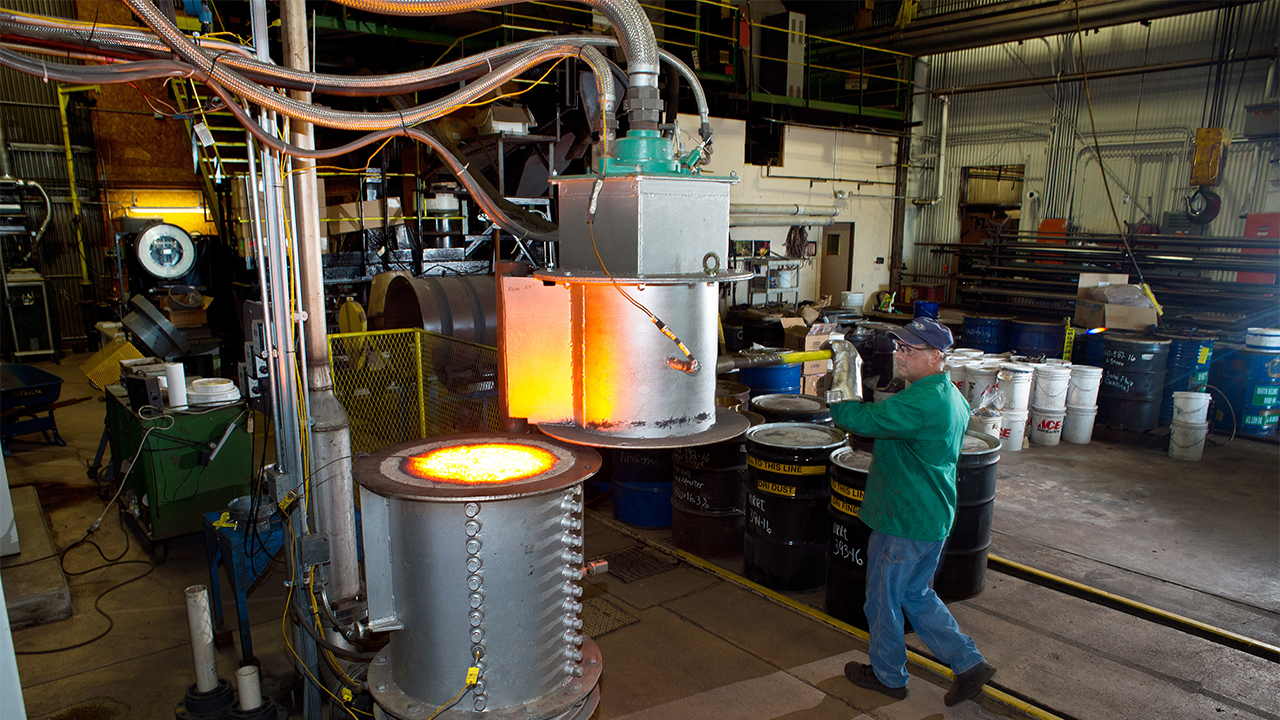
UMN Duluth’s Natural Resources Research Institute (NRRI) is driving the “Iron of the Future” research program for Minnesota’s Iron Range with the help of a $2.1 million Department of Energy (DOE) grant leveraging an additional million dollars of Minnesota legislative and other support.
Steel industry furnaces are seeking higher value iron pellets at the same time that Minnesota’s ore resources are becoming more complex and difficult to process. Minnesota’s taconite industry serves the U.S. blast furnace industry, which now accounts for a shrinking one-third of the national steel industry. Electric arc furnaces require higher value metallic iron feedstocks.
Much of this work is carried out at NRRI’s minerals research facility on the Iron Range in Coleraine, Minn. The program seeks to characterize future iron resources, develop new mineral processing methods, develop new iron products and improve the direct reduced iron (DRI) process. With the DOE’s support, NRRI researchers are also helping Minnesota’s iron industry demonstrate new approaches and technologies to reduce energy and water consumption, reduce global carbon emissions (steel and concrete industries compose nearly 20 percent of the U.S. carbon dioxide footprint) and eliminate effluents. The goal of the program is to demonstrate a potential portfolio of competitive iron products to keep Minnesota’s iron mines open and thriving.
“This [project] advances the science,” University Interim Vice President for Research Michael Oakes said. “Industry loves it and it's good for the environment, so this is the kind of thing we're trying to drive in the research enterprise and NRRI is a…success with innovation culture.”
Learn more about Iron of the Future
Featured as part of the Vice President for Research's FY2021 annual report to the Board of Regents.